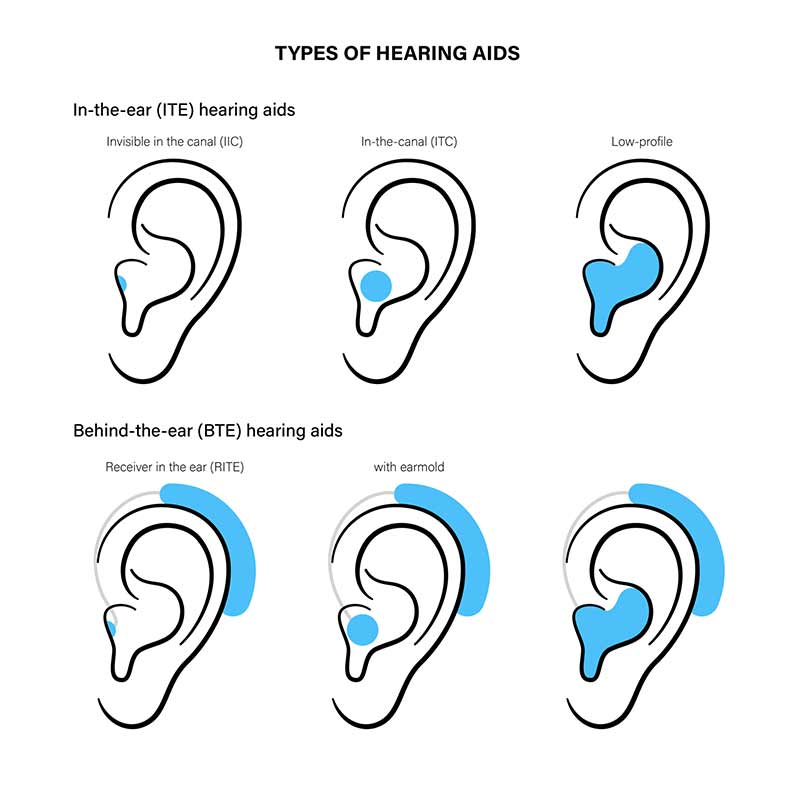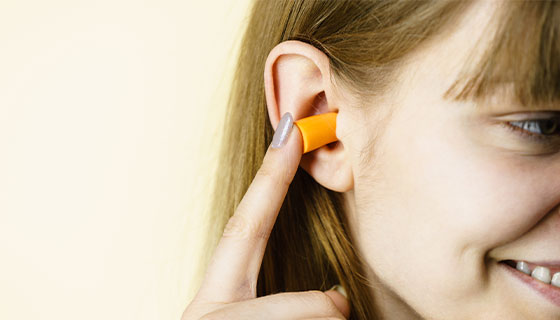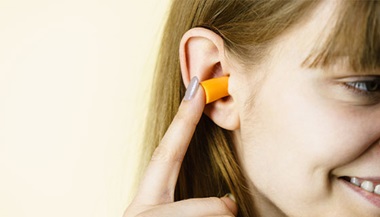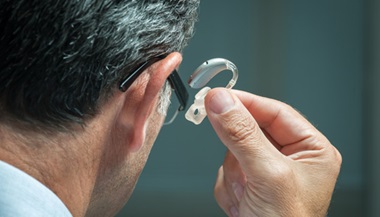Hearing Aids
The hearing aid industry has made significant advancements in technology to assist individuals with hearing loss over the last several years. Benefits include improved listening in background noise, rechargeable batteries, and Bluetooth connectivity. Current hearing aids can stream to Bluetooth devices, including Android phones, iPhones and certain tablets.
What You Need to Know
- There are many types of hearing aids available on the market.
- The experience of wearing hearing aids has improved greatly through better technology and research.
- The hearing aid industry has made significant advancements in correcting hearing loss.
What kind of hearing aid is right for me?
There are many types of hearing aids on the market, and the audiologists at Johns Hopkins have the expertise and experience to find the right one for your hearing loss and lifestyle. Your audiologist will work with you closely to determine the style and technology that is best for you.
The sizes and styles of hearing aids currently available include the following:

Behind-the-Ear (BTE)
In order to fit traditional behind-the-ear hearing aids, custom ear molds are made to the shape of your ear. This mold fits into your ear, while the device wraps around the back of your ear. The device and earmold can come in different shapes and colors.Who is this right for?
People who have all types of hearing loss.
Pros
- Most durable. Most common type of hearing aid fit on pediatric patients.
- May be easier to clean and maintain.
- Frequently fit on patients with more severe hearing losses.
- Less prone to repair from active drainage from the ear.
- Rechargeable or disposable batteries.
- Bluetooth compatible.
Cons
- Requires the tubing of the earmold to be changed about every six months.
- May be visible depending on hairstyle.
Receiver-in-the-Canal (RIC)
Receiver-in-the-canal devices are a very popular choice for many patients. RIC hearing aids can be open-fit, meaning your ear canal is not entirely blocked and natural sound is able to enter your ear in addition to the amplification from the hearing aid. These devices come in a variety of shapes and colors. They are not custom-made and instead come in different sizes depending on the length and shape of your ear.Who is this right for?
Typically, people with high frequency hearing loss.
Pros
- Open fit allows natural sound to enter the ear without occlusion.
- Variety of colors and styles.
- Rechargeable or disposable batteries.
- Bluetooth compatible.
Cons
- Open fit may not be appropriate for more severe hearing loss.
- May be visible depending on hairstyle.
In-the-Ear (ITE)
In-the-ear hearing aids are custom made to fill the bowl of your outer ear. Custom impressions are taken of both ears, which is used to make a custom hearing aid encased in a hard shell.Who is this right for?
People with mild to severe hearing loss.
Pros
- Fits comfortably and securely within the ear.
- No external wire or components - all one piece.
- Easier to manipulate for people with dexterity issues.
- Rechargeable or disposable batteries, depending on device manufacturer.
- May be Bluetooth compatible.
Con
- Lack of cosmetic appeal.
- More prone to damage due to drainage and moisture from the ear.
In-the-Canal (ITC)
In-the-canal hearing aids are less visible than larger in-the-ear hearing aids. These hearing aids are custom made from impressions of your ear canal, so they fit discreetly down into the ear canal.Who is this right for?
People with mild to moderately severe hearing loss.
Pros
- May be less visible and more cosmetically appealing than ITE hearing aids.
- May be Bluetooth compatible.
Cons
- Problems with finger or hand dexterity can make manipulating small controls difficult.
- Due to the small size, ITC hearing aids may not filter our background noise as well as the larger ITE or RIC styles.
- Uses small disposable batteries.
- May not be an appropriate option for people with chronic external or middle ear issues.
Completely-in-the-Canal (CIC)
Completely-in-the-canal hearing aids are custom fit and are placed deeply into the ear canal, making them the least visible. There is typically a small handle or cord on the device to help remove it.
Who is this right for?
People with mild to moderately severe hearing loss.
Pro
- Least visible of hearing aids.
Cons
- Shorter battery life of only three or four days.
- Some people cannot wear them because of the shape of their ear.
- May not be an appropriate option for people with chronic external or middle ear issues.
- May be occluding depending on type and degree of loss.
- Due to the smaller size, CIC hearing aids may not filter out background noise as well as the larger ITE or RIC styles.
- Often not Bluetooth compatible due to the small size of the device.
Johns Hopkins Audiology
Our team of audiologists provides hearing testing, hearing aid selection and fitting, and implantable hearing devices for people of all ages.





